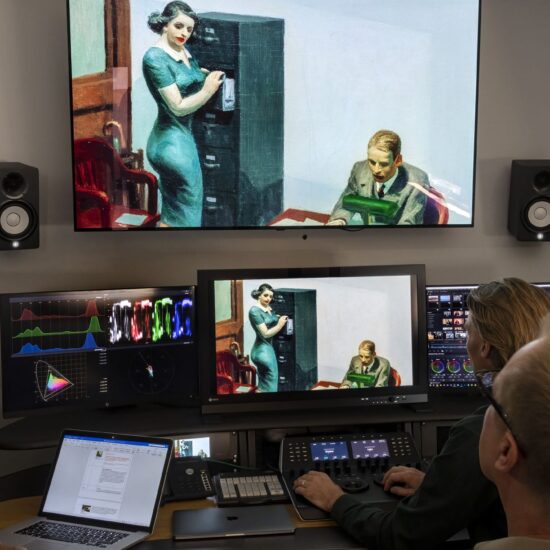
This interview with “Avatar: The Way of Water” costume designer Deborah L. Scott first appeared in a special section of the Below-the-Line issue of TheWrap’s awards magazine.
With a movie as effects and animation heavy as “Avatar: The Way of Water,” it’s easy to assume that physical costumes weren’t actually constructed. Instead, you can imagine, they were drawn on a tablet and fed to the wizards at Weta FX, who would make the clothes appear fully realized in the finished film. But that wasn’t the case. Instead, the film’s advanced technology necessitated that everything be created IRL.
“We built everything,” said costume designer Deborah L. Scott, a veteran of “Titanic” and the first “Avatar.” “We built every single Na’vi garment, every bracelet, every necklace. Because the technology is so good at capturing the image and the texture of these pieces, you can’t draw it in the computer and expect it to have the three-dimensional life it has. Give them a real piece of fabric so the computer can scan every rough spot, every worn spot, especially when you get into the very complicated Na’vi pieces which are hand-woven and beaded and bespoke. You can’t hand-draw a macramé knot and read it.”
For “Avatar: The Way of Water,” one new group Scott designed for was the Recombinants, bad Marines from the first movie who are now resurrected in avatar bodies. Aspects of their stylized, soldierly look included their tactical gear, the shade of camouflage they were wearing (Scott moved away from the more digital look of the first film’s camo after the U.S. army abandoned it) and the patches and insignias they wear on their vests. (“Deja-Blue,” a patch slogan riffing on how the Marines were back in blue Na’vi bodies, was an idea that sprang from Stephen Lang, who plays the villainous Quaritch.) And she also created a version of some of the pieces that could be worn while the actors were shooting their performance-capture footage, adding to the authenticity.
“Jim is a real believer that your clothing dictates your movement,” Scott said. “Whenever possible, we would take parts of a flack vest and build it around (the performance-capture) markers. They make you move differently, they make you bend over differently. You can see them hold onto the straps or hook their thumbs in. It’s hard to fake it, and Jim doesn’t fake anything.”
There is also the issue of water, both in designing the look of the new reef tribe (“they use their environment to create their clothing, that’s where you see the shells and coral and the sea grass,” Scott said) and figuring out how costumes would interact with the water.
“That started to inform the design early on because Jim being Jim, there’s no cheating,” Scott said. “I would never put the real things in the water but we would build replicas. We would make them all white because when we would film underwater it was easier to see the shape and the color. We did exhaustive tests. All of these things informed the digital artists to get it to look real.”
Read more from the Below-the-Line issue here.















